Subnautica, and the Genius of "Scheduled Events"
Subnautica is a game I find myself thinking about often. On paper, it should be unremarkable; just another early access survival crafting game in what has always been an…. ocean…. of early access survival crafting games.
But beyond its merits as probably the most organically harrowing thalassophobic nightmare yet captured in a video game, Subnautica has also pioneered some really compelling open world mechanics that I feel should be more widely appreciated.
But beyond its merits as probably the most organically harrowing thalassophobic nightmare yet captured in a video game, Subnautica has also pioneered some really compelling open world mechanics that I feel should be more widely appreciated.
12 Games
(Minor Spoilers For Subnautica)
Considering how unusual it remains for the genre, it may surprise you to hear Subnautica is a rather story-heavy survival crafter. While its not uncommon for survival crafting games to take place on static world maps, Subnautica is unique in that its world features Set Pieces, large landmarks and major locations that carry with them plot significance. The most prominent of which is the Aurora, a massive ship crash-landed in the ocean in which Subnautica takes place.
Subnautica opens with the player ejecting from the Aurora after some catastrophic failure causes it to go down over an ocean planet. The stranded ship looms large as the singular landmark on the seas horizon as the player begins their journey of aquatic scavenging - and because of the Auroras monolithic presence in the distance players start the game with a clear, enticing point of interest.
With this landmark, the devs do something to heighten the stakes: after a few in-game days, the damage the Aurora sustained compromises the engine and the Aurora explodes in spectacular fashion.
Considering how unusual it remains for the genre, it may surprise you to hear Subnautica is a rather story-heavy survival crafter. While its not uncommon for survival crafting games to take place on static world maps, Subnautica is unique in that its world features Set Pieces, large landmarks and major locations that carry with them plot significance. The most prominent of which is the Aurora, a massive ship crash-landed in the ocean in which Subnautica takes place.
Subnautica opens with the player ejecting from the Aurora after some catastrophic failure causes it to go down over an ocean planet. The stranded ship looms large as the singular landmark on the seas horizon as the player begins their journey of aquatic scavenging - and because of the Auroras monolithic presence in the distance players start the game with a clear, enticing point of interest.
With this landmark, the devs do something to heighten the stakes: after a few in-game days, the damage the Aurora sustained compromises the engine and the Aurora explodes in spectacular fashion.
There are some physical and figurative implications as a result from this event. Pieces of the ship get flung out across the ocean and mild radiation starts to leak out into the surrounding water. The “survival” aspect becomes underlined: the ship was your main connection to the outside community and now you might realize that its just you and the ocean now. The world also gains a hostile edge: bad things happen out here. Your prospects are bleak.
Something subconscious also happens here, this event suggests this world is in motion . Things happen without your input, events conspire from independent forces. If the Aurora wasnt so (cleverly designed to be) massive, you might have missed it, maybe you need to start paying attention .
This is what Id like to call a Scheduled Event, something thats set to happen after a set amount of time - and while that might sound very basic I think this has a profound effect on open world games.
(None of this applies to Subnautica Below Zero which is unfortunately very different from Subnautica)
Something subconscious also happens here, this event suggests this world is in motion . Things happen without your input, events conspire from independent forces. If the Aurora wasnt so (cleverly designed to be) massive, you might have missed it, maybe you need to start paying attention .
This is what Id like to call a Scheduled Event, something thats set to happen after a set amount of time - and while that might sound very basic I think this has a profound effect on open world games.
(None of this applies to Subnautica Below Zero which is unfortunately very different from Subnautica)
Open world games suffer, I think, from what you could probably call Exploration Tourism, or Theme Park Syndrome. Because open world games are often large in size and have grown increasingly proud of the level of “freedom” they offer players, designers are often terrified of confronting players with too many consequences for the decisions they make in engaging with these worlds. These “consequenceless” approaches to design often leave game worlds feeling frozen in time, or otherwise so conveniently insulated that no action bleeds over into the rest of the world in any meaningful way. This results in disbelievable conflicts, oh the worlds about to end? Thats okay, itll wait while I help some wizards find their missing couch, and maybe Ill have enough time to become the king of the local bandit lords.
What you end up with are games composed of attractions: sights to see, rides to ride, always available at your leisure. You are a tourist and the world is a theme park.
And maybe thats a cool experience to have sometimes but I think its wasted potential for that to be the experience most of the time.
What you end up with are games composed of attractions: sights to see, rides to ride, always available at your leisure. You are a tourist and the world is a theme park.
And maybe thats a cool experience to have sometimes but I think its wasted potential for that to be the experience most of the time.
I think what open world games often lack is a dimension of time , a sense that things are living and moving. By nature open world games require alot of time investment, but as days and weeks pass for you it can feel as tho the lives of these characters you meet dont project past a single hour.
Of course having a world fully in motion comes with its own challenges. If your game is too chaotic, its liable to become incomprehensible and poorly articulate your cool ideas. Games like Outer Wilds show how complicated this can be to achieve - but Outer Wilds also demonstrates how rewarding taking this risk can be.
To me Subnautica dismantles the feeling of timelessness with this simple trick of scheduling an event, even when the rest of the game is still, in effect, on pause until the player hits certain progression flags. Good design is about clever use of lightweight but effective decisions that make your experience exponentially more captivating to play. Sometimes its not that complicated.
Of course having a world fully in motion comes with its own challenges. If your game is too chaotic, its liable to become incomprehensible and poorly articulate your cool ideas. Games like Outer Wilds show how complicated this can be to achieve - but Outer Wilds also demonstrates how rewarding taking this risk can be.
To me Subnautica dismantles the feeling of timelessness with this simple trick of scheduling an event, even when the rest of the game is still, in effect, on pause until the player hits certain progression flags. Good design is about clever use of lightweight but effective decisions that make your experience exponentially more captivating to play. Sometimes its not that complicated.
(Moderate Spoilers For Elden Ring)
Heres an example in Elden Ring (even tho Elden Ring already does so many things right):
Imagine if, instead of the single falling star that crashes and opens the way to Nokrom after defeating Radahn, smaller stars fell over time across Limgrave and Caelid, periodically opening minor cave dungeons and spawning Fallingstar Beasts while Radahn is alive. Defeating Radahn could have the same function it currently does, releasing all unfallen scheduled stars in addition to the major Nokrom star.
This could have a few benefits. It primes people to expect new locations to open up in Limgrave, it draws your attention towards Caelid a bit more, and it could serve as a way to pace out Limgraves content, the region most front-loaded with dungeons to do. And of course, this is all besides the fact that itd make the world that much more interesting.
Some other ambitious ideas could have been done here too (tho not without rewrites in this case). What if something happened to the Erdtree as another massive landmark? What if the Carian moon did something? A slow encroaching of exotic enemy types into early areas? Etc etc
Heres an example in Elden Ring (even tho Elden Ring already does so many things right):
Imagine if, instead of the single falling star that crashes and opens the way to Nokrom after defeating Radahn, smaller stars fell over time across Limgrave and Caelid, periodically opening minor cave dungeons and spawning Fallingstar Beasts while Radahn is alive. Defeating Radahn could have the same function it currently does, releasing all unfallen scheduled stars in addition to the major Nokrom star.
This could have a few benefits. It primes people to expect new locations to open up in Limgrave, it draws your attention towards Caelid a bit more, and it could serve as a way to pace out Limgraves content, the region most front-loaded with dungeons to do. And of course, this is all besides the fact that itd make the world that much more interesting.
Some other ambitious ideas could have been done here too (tho not without rewrites in this case). What if something happened to the Erdtree as another massive landmark? What if the Carian moon did something? A slow encroaching of exotic enemy types into early areas? Etc etc
(Explicit Spoilers For Tears Of The Kingdom)
The war has been lost on arguing that Zeldas open world could use alot of work, but one thing I dont think anyone could disagree with is: how low the stakes are.
The premise is: John Ganon has been reawakened, his ceaseless power surging from underground strong enough to keep Hyrule Castle suspended in mid-air…. for weeks! For in-game (and IRL) months! Why not take that opportunity to promote some escalation? Why doesnt the miasma get worse over a set period of time? Why not have Ganons dark forces slowly encroach on Hyrule Field and Lookout Landing? Its revealed partway through the main series of quests that Ganon has been sowing discord on the surface to specifically keep Link distracted while he regains his full power - so why not manifest that somehow to pressure players to act with urgency?
Considering quite literally nothing was done with the Underground despite being one of the most interesting additions to the game initially, if they were afraid of inhibiting the flow of activities on the surface why couldnt they perform some of these events below? Why couldnt the Underground reflect the mounting influence of Ganon through gloom type events. What, you wanna make sure you dont get in the way of my 60th Bokobkin camp raid?
The war has been lost on arguing that Zeldas open world could use alot of work, but one thing I dont think anyone could disagree with is: how low the stakes are.
The premise is: John Ganon has been reawakened, his ceaseless power surging from underground strong enough to keep Hyrule Castle suspended in mid-air…. for weeks! For in-game (and IRL) months! Why not take that opportunity to promote some escalation? Why doesnt the miasma get worse over a set period of time? Why not have Ganons dark forces slowly encroach on Hyrule Field and Lookout Landing? Its revealed partway through the main series of quests that Ganon has been sowing discord on the surface to specifically keep Link distracted while he regains his full power - so why not manifest that somehow to pressure players to act with urgency?
Considering quite literally nothing was done with the Underground despite being one of the most interesting additions to the game initially, if they were afraid of inhibiting the flow of activities on the surface why couldnt they perform some of these events below? Why couldnt the Underground reflect the mounting influence of Ganon through gloom type events. What, you wanna make sure you dont get in the way of my 60th Bokobkin camp raid?
As a pioneer of so many aspects of modern open world games, its probably not very surprising to hear Oblivion had yet another thing going for it. While in a rough and rudimentary form, the sporadic and uninvited emergence of Oblivion gates in your travels across Cyrodiil not only give the game an ominous edge but serve as the major tension selling the plot of the game.
Which is really smart of Bethesda (rare praise). Dont get me wrong, Oblivions not working any miracles. Despite its ambitious qualities on paper its still a rather primitive game as an experience. But it goes to show theres still plenty of room to experiment with the genre - and I think people definitely feel we arent doing enough of that.
Which is really smart of Bethesda (rare praise). Dont get me wrong, Oblivions not working any miracles. Despite its ambitious qualities on paper its still a rather primitive game as an experience. But it goes to show theres still plenty of room to experiment with the genre - and I think people definitely feel we arent doing enough of that.
(Spoilers For A Version Of Final Fantasy 14 You Cant Play Anymore)
A more popular category of example exists in MMOs and Live Service games, a format of routine and scheduled updates.
The most common sort of player-independent event are what some people call Heraldry Events, events that precede major updates, named in reference to how heraldry would precede the arrival of noble entourages and processions of knights. In much the same way, these events would serve as a leadup to the arrival of new content in spectacular and plot-significant fashion.
My personal favorite heraldry event was the arrival of the moon Dalamud at the end of Final Fantasy 14 version 1.0, signaling the arrival of the A Realm Reborn update and the rebirth of the doomed MMO. Dalamud would inch closer in the sky above Eorzea, day by day, week by week leading up to relaunch. Dalamud was not merely a moon, but an artificial satellite constructed as a prison for Bahamut, recurring series badass and in-universe beast of untold destruction. His descent, brought on by the machinations of magitek empire Garlemald, represented an omen coming to the game.
Which, you know, was sick as hell, and its not even interactive, really.
A more popular category of example exists in MMOs and Live Service games, a format of routine and scheduled updates.
The most common sort of player-independent event are what some people call Heraldry Events, events that precede major updates, named in reference to how heraldry would precede the arrival of noble entourages and processions of knights. In much the same way, these events would serve as a leadup to the arrival of new content in spectacular and plot-significant fashion.
My personal favorite heraldry event was the arrival of the moon Dalamud at the end of Final Fantasy 14 version 1.0, signaling the arrival of the A Realm Reborn update and the rebirth of the doomed MMO. Dalamud would inch closer in the sky above Eorzea, day by day, week by week leading up to relaunch. Dalamud was not merely a moon, but an artificial satellite constructed as a prison for Bahamut, recurring series badass and in-universe beast of untold destruction. His descent, brought on by the machinations of magitek empire Garlemald, represented an omen coming to the game.
Which, you know, was sick as hell, and its not even interactive, really.
Fortnite probably makes the biggest spectacle of this. I am remit to give Fortnite any credit for anything it does when its probably the worst thing to happen to gaming yet.
Its hard for me to picture an open world game scheduled events couldnt enhance.
Imagine youre driving through San Andreas and you hear on the radio that the… uhh….. Circus was coming to town in a week. You forget all about this until one day the sun comes up and BAM, the Circus has come to town, along with several clown characters with their own clown storylines and clown missions on offer.
Or maybe theres breaking news about a bank robbery happening downtown, and if you drive down that street you can see the police standoff in real time. These dont need to always be content, their primary purpose is to sell the notion that the world is breathing.
Imagine youre driving through San Andreas and you hear on the radio that the… uhh….. Circus was coming to town in a week. You forget all about this until one day the sun comes up and BAM, the Circus has come to town, along with several clown characters with their own clown storylines and clown missions on offer.
Or maybe theres breaking news about a bank robbery happening downtown, and if you drive down that street you can see the police standoff in real time. These dont need to always be content, their primary purpose is to sell the notion that the world is breathing.
We spend so much time worrying about how complex we can make the graphics and not enough time thinking about what we can use the graphics for . I know Im in the minority when I say: I do not care how great your game looks if it is uninteresting. Especially when it seems like alot of the most compelling things in video games arent all that technically complicated to make, the most difficult thing seems to be just having an imagination.
To bring it back, Subnautica is a great example of this. A relatively traditional survival crafting open world game elevated a great deal by just a few solid strokes of imagination. And sure, maybe being in Early Access for quite a long time gave them the opportunity to find the right revisions - but that doesnt undercut the fact that they recognized what the right changes should have been.
It might not sound like much but this keen sense of vision is what makes what would otherwise be a bogstandard survival crafter stand out in my mind for years and years after the fact. Maybe people should take some notes (I just wrote some for you).
To bring it back, Subnautica is a great example of this. A relatively traditional survival crafting open world game elevated a great deal by just a few solid strokes of imagination. And sure, maybe being in Early Access for quite a long time gave them the opportunity to find the right revisions - but that doesnt undercut the fact that they recognized what the right changes should have been.
It might not sound like much but this keen sense of vision is what makes what would otherwise be a bogstandard survival crafter stand out in my mind for years and years after the fact. Maybe people should take some notes (I just wrote some for you).
Honorable Mention
While not quite representative of what Im talking about (especially considering its not open world), Majoras Mask is a clear trailblazer in this department
While not quite representative of what Im talking about (especially considering its not open world), Majoras Mask is a clear trailblazer in this department
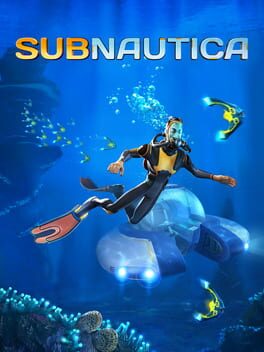
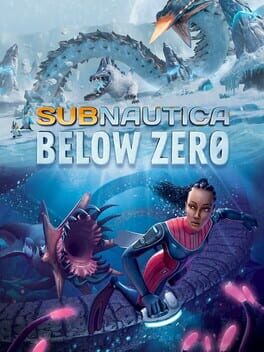




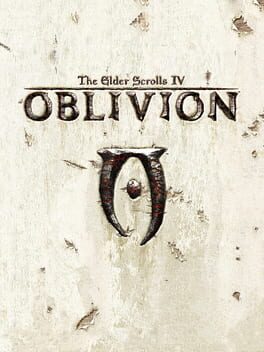


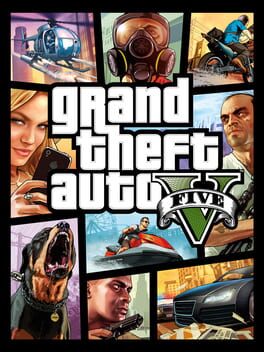
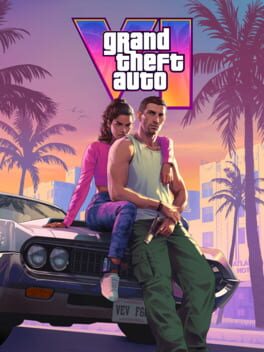

AmazingPenis
6 days ago